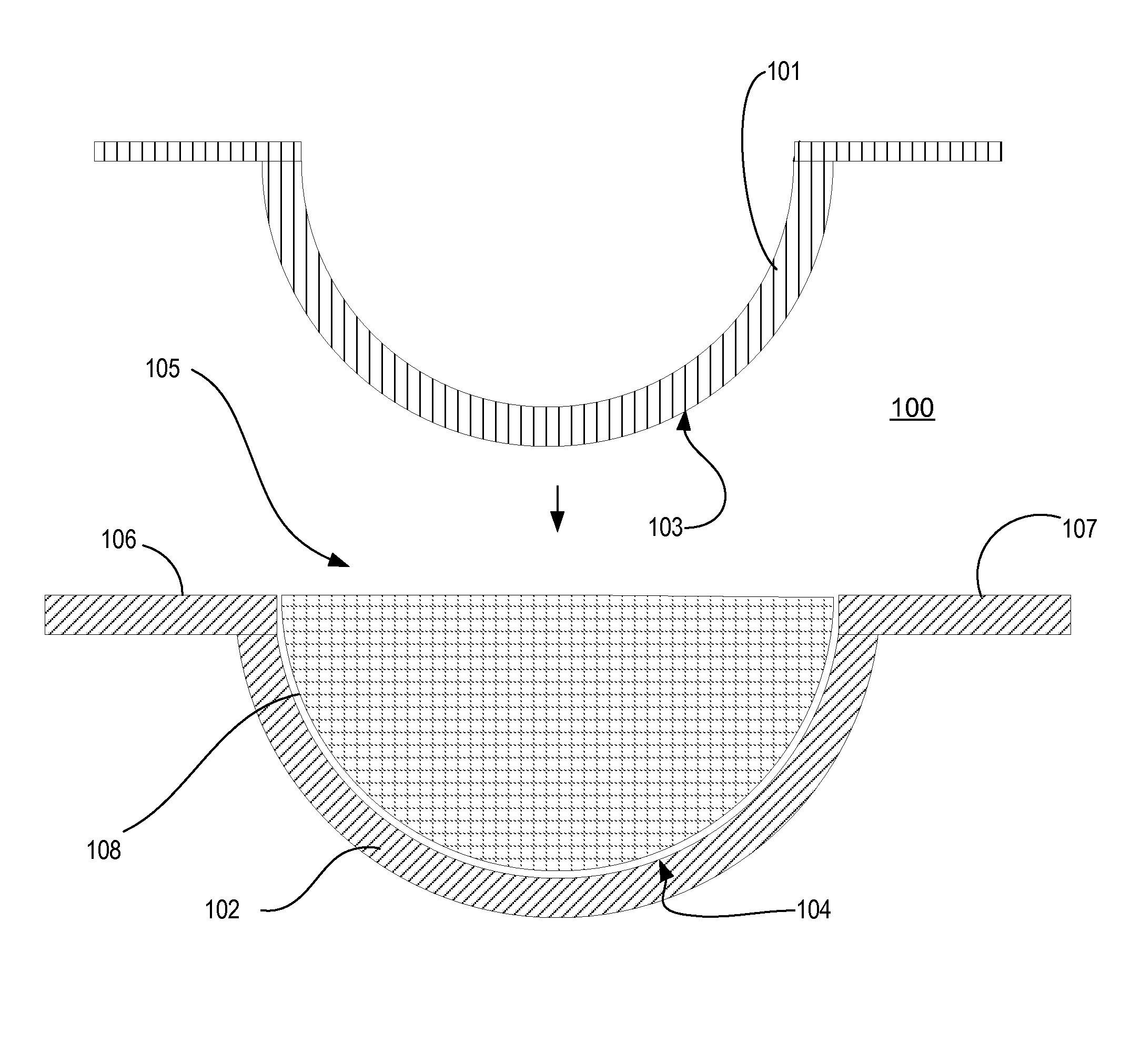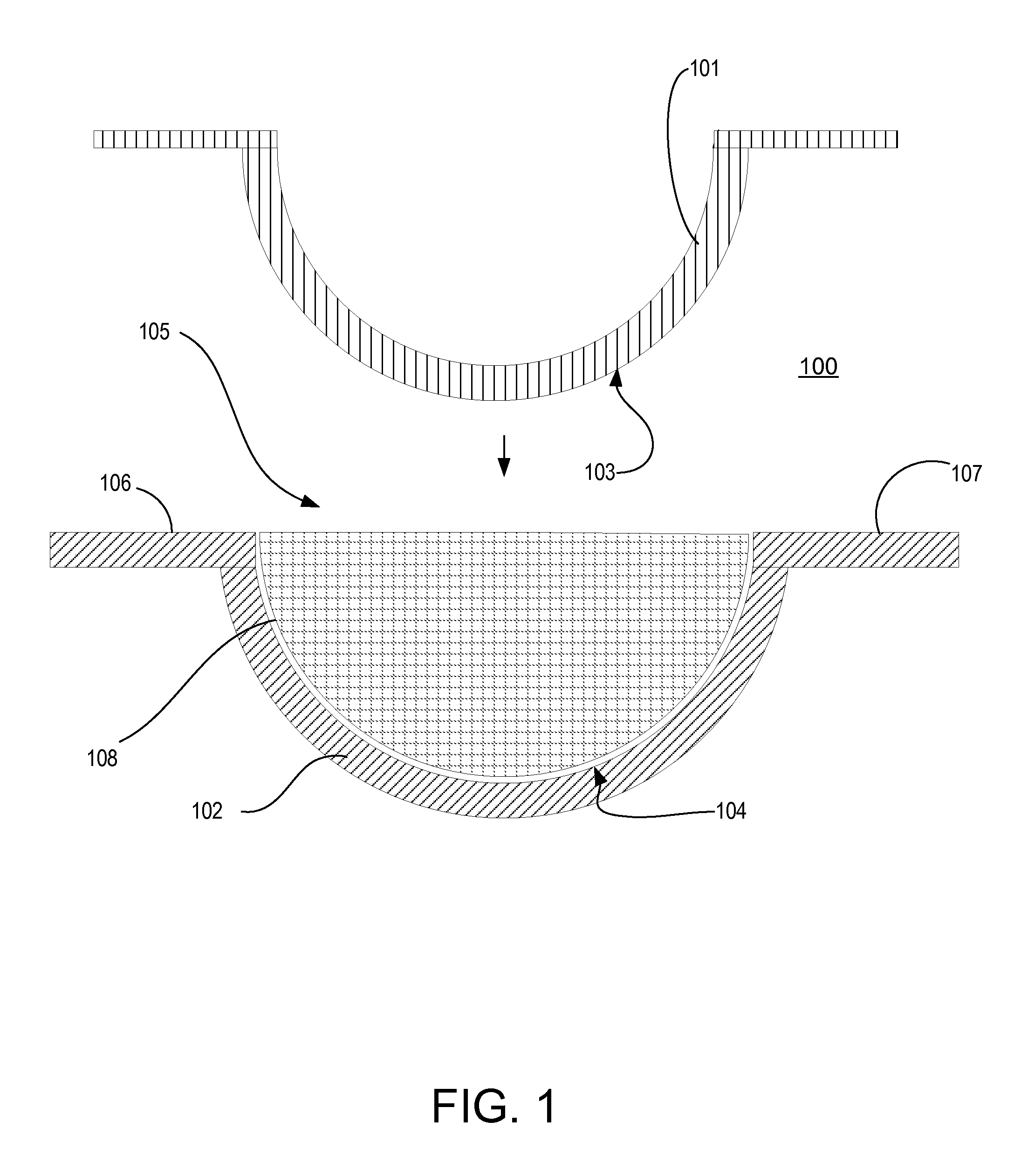Reduction of excess polymeric flash ring
- Summary
- Abstract
- Description
- Claims
- Application Information
AI Technical Summary
Benefits of technology
Problems solved by technology
Method used
Image
Examples
example 1
[0060]
Monomer DoseHEMA RingFCBCVolumeDefect RateSurfactantMoldMold(mg / cavity)(%)Tween 80PSPP5637.8%Tween 80PSPP7312.3%Tween 80PSPP86 3.3%25% Tween 80 +PSPP79 0.02%*75% Span 80*Only 5 HEMA rings attaching to the FC flange based on demold audit on 27,896 lenses during the sample runs.
example 2
[0061]
HEMA RingBCDose VolumeDefect RateMoldSurfactant(mg / cavity)(%)PP100% w.t. Tween 8079-861.1-6.7%PP50% w.t. Tween 80 + 50%790.4%w.t. Span 80PP25% Tween w.t. + 75%790.0%w.t. Span 80PS100% w.t. Tween 80791.8%-2.8%PS25% Tween w.t. + 75%790.3w.t. Span 80
[0062]In various embodiments of the present invention, the surfactant mixtures can be from 1% w.t. Span 80 (99% w.t. Tween 80) to 100% w.t. pure Span 80. In some embodiments, mixtures of Span 80 and Tween 80 can be from 25% w.t. Span 80 (75% w.t. Tween 80) to 95% w.t. Span 80 (5% w.t. Tween 80). In some embodiments, preferred mixtures of Span 80 and Tween 80 can be from 50% w.t. Span 80 (50% w.t. Tween 80) to 88% w.t. Span 80 (12% w.t. Tween 80), while the most preferred mixture includes 75% w.t. Span 80+25% w.t. Span 80.
[0063]Accordingly, the present invention provides mold parts, as well as methods and apparatus for forming the mold parts. According to the present invention, at least a portion of the mold part is formed from a water...
PUM
 Login to View More
Login to View More Abstract
Description
Claims
Application Information
 Login to View More
Login to View More - R&D
- Intellectual Property
- Life Sciences
- Materials
- Tech Scout
- Unparalleled Data Quality
- Higher Quality Content
- 60% Fewer Hallucinations
Browse by: Latest US Patents, China's latest patents, Technical Efficacy Thesaurus, Application Domain, Technology Topic, Popular Technical Reports.
© 2025 PatSnap. All rights reserved.Legal|Privacy policy|Modern Slavery Act Transparency Statement|Sitemap|About US| Contact US: help@patsnap.com



